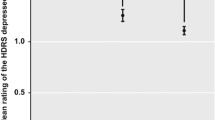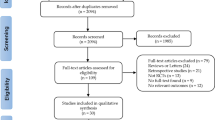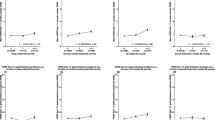Abstract
Rationale. Among the many problems in interpreting dose-response studies with antidepressants are the psychometric problems in the identification of true antidepressive effect versus true adverse drug effect.
Objectives. This study is a re-examination of a dose-response trial with citalopram in order to examine the explanatory ability of using strict psychometric dimensions to measure the wanted and unwanted drug effects of different doses compared to placebo.
Methods. The antidepressive response was measured after 2 and 6 weeks of therapy with the depression subscales of the HAM-D and on the Montgomery-Asberg Depression Scale (MADRS). The patient-reported Symptom Checklist (SCL) sub-scales for depression and anxiety were also examined. Subjective side-effects were measured on serotonin-specific items of the SCL. Effect size statistics were used to measure the antidepressive effect (an effect size of 0.30 equals a drug superiority over placebo of 15–20%). Side effects were statistically analysed using baseline-adjusted scores of the individual symptoms.
Results. The psychometric analysis of the outcome scales showed that the full HAM-D17, the SCL-56 and the SCL side-effect subscale were multidimensional scales, while the HAM-D and MADRS subscales as well as the SCL-anxiety subscale were most homogeneous, indicating that their total scores are sufficient statistics. When the scales were used as well as the individual serotonin-specific SCL side-effect symptoms, the results showed that after 2 weeks of therapy a clinical response (effect side over 0.30) was only seen for the SCL-anxiety subscale in the citalopram doses of 40 mg and 60 mg daily. After 6 weeks of therapy response to even 10 mg and 20 mg was seen in the HAM-D and MADRS subscales and in the SCL-anxiety subscale, however, with lower effect sizes than found for 40 mg and 60 mg citalopram daily. The dose of 20 mg citalopram induced side-effects comparable with those seen for 40 mg and 60 mg, while 10 mg was not different from placebo. This was further confirmed by the fact that more patients dropped out on 20 mg than on 10 mg citalopram daily, due to adverse events.
Conclusion. This psychometric re-examination of a citalopram dose-response trial has shown that the pure antidepressive or antianxiety effects can be observed after 6 weeks of therapy even in a dose of 10 mg daily. However, both 10 mg and 20 mg daily had lower effect sizes than 40 mg and 60 mg daily. At a dose level of 20 mg daily, side effects are more pronounced initially than at 10 mg daily; this should be taken into account clinically when evaluating the overall benefit of the drug. For a highly serotonin-specific drug such as citalopram, both wanted and unwanted effects are dose-related.
Similar content being viewed by others
Author information
Authors and Affiliations
Additional information
Electronic Publication
Rights and permissions
About this article
Cite this article
Bech, P., Tanghøj, P., Andersen, H. et al. Citalopram dose-response revisited using an alternative psychometric approach to evaluate clinical effects of four fixed citalopram doses compared to placebo in patients with major depression. Psychopharmacology 163, 20–25 (2002). https://doi.org/10.1007/s00213-002-1147-6
Received:
Accepted:
Published:
Issue Date:
DOI: https://doi.org/10.1007/s00213-002-1147-6




